More Advanced Data Science Algorithms
Last week we covered the first 5 popular data science algorithms with simple approaches such as regression, clustering, and K-nearest neighbor. In this week’s list, we will tackle another set of 5 algorithms that are a bit more complex.
6. Decision Trees
Decision trees are a supervised machine learning model that utilizes tree-like structures for decision making. Decision trees are usually used for classification problems in which the model can decide the group to which a given item in a dataset belongs.
There are two types of decision trees Categorical and Continous Decision trees. As the name states Categorical decision trees include categorical target variables that are divided into categories, there are no middle values. While, Continuous Decision trees focus on continuous variables such as amounts in dollars, etc.
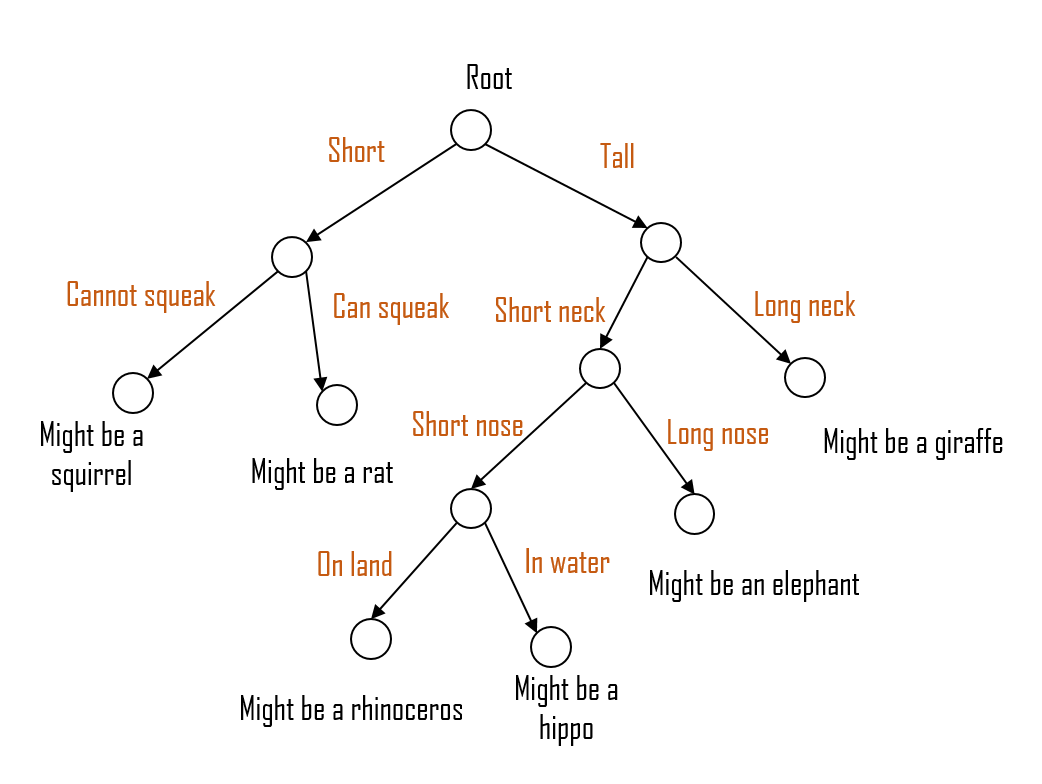
In the case of a decision tree, a choice will be made at each node taken by a given path of the tree. A great example of a Decision Tree Algorithm is a game called Akinator where a computer program is tasked to guess what you are thinking of by asking the player a long series of categorical yes or no questions.
Uses of Decision Trees
Decision trees are mainly used for Classification and regression problems. Such uses may include, differentiating between different animals, determining an employee's salary depending on features such as age, job, etc., or drug prescriptions. It is also used to determine weather-based activities for sports events and such. In continuous decision trees, each decision is given a weight to better determine a more accurate decision.
7. High Dimensional Visualization
With the enormous amount of features that can be provided in a single machine learning or data science model, a corresponding number of dimensions will also be provided, resulting in the curse of dimensionality problem.
The curse of dimensionality refers to the negative effects of having too many features for a given model. Such effect is caused by the exponential growth of data set n with reference to the available dimensions d. These effects will lead to a much longer processing time.
Here is where high dimensional visualization comes in handy, as it extracts all the useful features (features that do actually affect the model's performance) out of a given dataset and removes all the unnecessary features. Such algorithms are exceptionally helpful as they can decrease the overall time of a model's computation as extracting hidden patterns in lower dimensions is much easier.
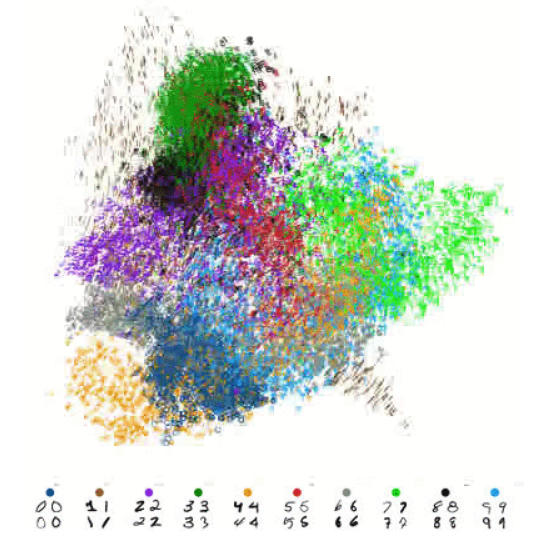
Uses of High Dimensional Visualization
Using high dimensional visualization is extremely useful in cases where the number of available features exceeds the number of observations. Some real-life examples of high-dimensional visualization would include measuring gene expressions that contain thousands of samples with each sample containing thousands of genes.
8. Time Series Forecasting
Time Series Forecasting is a unique machine learning model which involves a timing component, thus requiring the use of time-series data (data with given time stamps). The goal of a time series forecasting algorithm is to predict future values based on the previously provided values over a certain period of time. For example, trying to predict the demand for a certain product based on the previous two years' sales. Predictions are useful extrapolations of data so a company can avoid overproducing products and reduce overall costs. The longer the time period an algorithm can analyze, the better the forecasted prediction.
Some of the well-known time series forecasting algorithms do include and are not limited to, XGBoost, LGBM, LSTM, and Autoregressive.
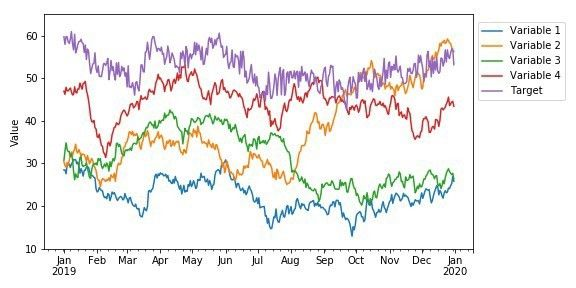
Uses of Time Series Forecasting
As you may have guessed, time series forecasting is commonly used for weather, financial, climate, earthquake, sales forecasting, and forecasting the spread of covid-19 cases. A real world example would be analyzing the stock market trends such as dips and peaks, predicting when a stock looks to be crashing or potentially rising. Stocks often have trading patterns that have repeated a certain shape and resulting in a specific outcome past a certain threshold. These patterns and their likely causes can be used to define a stock broker’s time series forecasting, buying with favorable patterns, and selling when encountering unfavorable patterns.
9. Text Mining
Text mining also referred to as text data mining or text analytics, is the process of extracting meaningful data such as facts, patterns, and relationships from a given text structured data. The extracted hidden patterns and relationships can aid in future business decisions among predictive analyses.
Some algorithms that can be used for text mining include K-mean clusters, K-Nearest Neighbor, Support Vector Machine, etc.
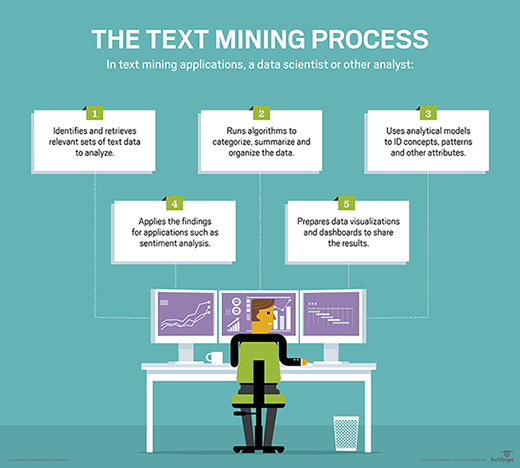
Uses of Text Mining
Some real-life examples of text mining include customer service chatbots, spam filtering, and contextual advertising. A Text Mining Analysis of multiple articles can help a businesses target the correct market to advertise to. Text Mining can also be used in the medical industry to extract important info in large volumes of text for doctors to find treatments faster.
10. Random Forests
Considered an improvement on normal decision trees, the random forest algorithm operates by constructing a multitude of different decision trees. Resulting in multiple decision trees being built simultaneously each returning its own result. These results are then combined to form a much better result. In the case of classifying an object, each decision tree will predict (identify) the given item into a specific category. The random forest algorithm would classify an object depending on the category with the most predictions. Unlike decision trees, the random forest algorithm can fix the problem of overfitting, by building its final decision on multiple predictions.
While Random forests are more optimized for classification problems, they can still work for regression problems, although the final results may be poor.
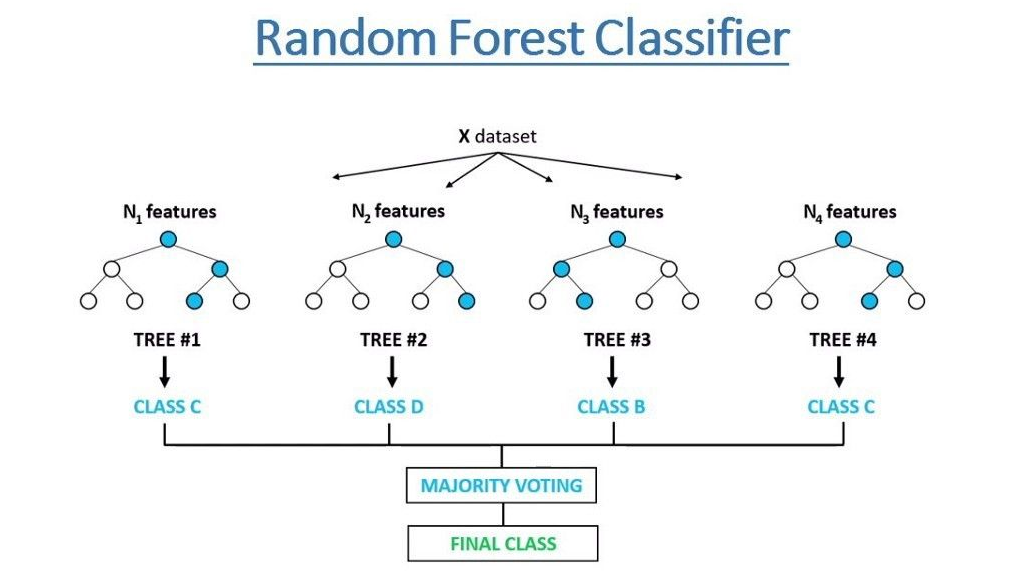
Uses of Random Forests
Some real-life examples of Random Forest algorithms include: Identifying a given patient's disease by analyzing their medical records and determining drug prescriptions and evaluating the sensitivity of said prescription. Essentially, if one were to use a Decision Tree, using a Random Forest algorithm will dramatically help with accuracy.
How Can You Use These Algorithms?
There are definitely a lot more ways than these Top Ten of the most commonly used algorithms/methods for both data science and machine learning, you may want to explore the powerful computing systems that make this fascinating industry possible.
Trying to implement an actual working mini-project for some of the above models will assist new data scientists in better understanding the algorithms to create valuable Machine Learning experiences head-on. SabrePC offers a plethora of solutions for data science applications, specializing in GPU accelerated solutions ranging from beginner machine learning workstations to enterprise-level data-crunching servers. With solutions that fit your budget and needs, contact SabrePC to talk to an expert representative to learn more.


.png?format=webp)